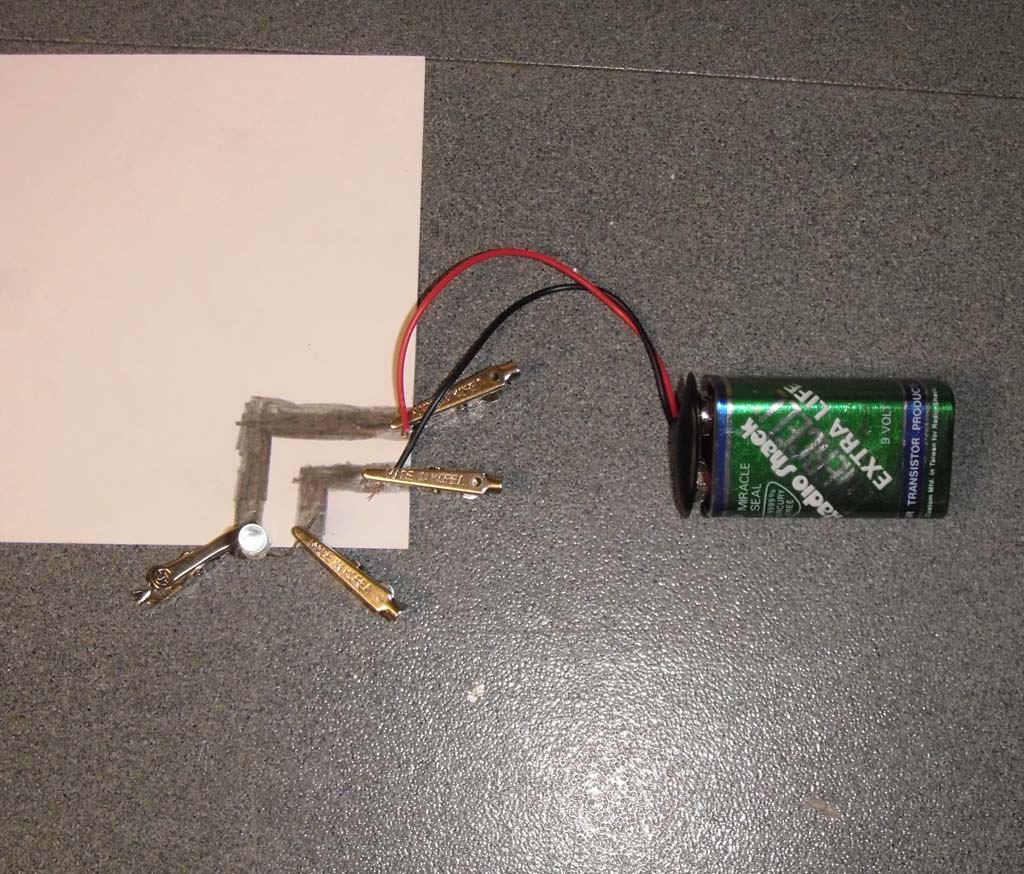Draw your own circuit

Circuits drawn with graphite
Draw your own circuit

Circuits drawn with graphite
Introduction
Graphite is an electrical conductor, a graphite pencil can be used to draw conducting lines on paper.
Material
Pencil or graphite art stick
Paper or index cards
A digital voltmeter
9 volt battery and battery holder.
Light emitting diode
6 alligator clip leads
Optional
A piezoelectric buzzer (It must be piezoelectric!)
Wire stripper
Assembly
Install the 9 volt battery into its holder, strip 1 cm of insulation from the ends of the red and black wires coming out of the holder.
To Do and Notice
Make two graphite pads 1 cm long and 1/2 cm wide adjacent to one edge of the paper. Then make two more on the other side of the paper.
Draw thick lines of graphite connecting each pad on one side of the paper to each pad on the other. Use clip leads to attach the battery to two pads. Use Clip leads to attach the LED to the other two pads. The longer lead from the LED should connect to the red lead from the battery. The light should come on.
Make the graphite lines thicker, observe what happens to the brightness of the light.
Use an eraser to thin the lines.
Repeat the experiment with longer lines.
Connect the piezoelectric buzzer.
Make complicated circuits connecting bulbs and buzzers in series and parallel.
Make a circuit using the battery without a holder and the LED without using clip leads. Just push the leads onto the graphite.
What's Going On?
Graphite is an electrical conductor. Electrons move in the planes of the graphite. A graphite line on paper models a wire in a circuit. A graphite line also has more resistance than a metal wire.
So What?
The graphite circuits are easy to see. They connect the drawing of a circuit directly to the circuit itself.
Reference
Paper Circuits by Household hacker on You Tube
http://www.youtube.com/watch?v=BwKQ9Idq9FM
|
Scientific Explorations with Paul Doherty |
|
19 Oct 2011 |